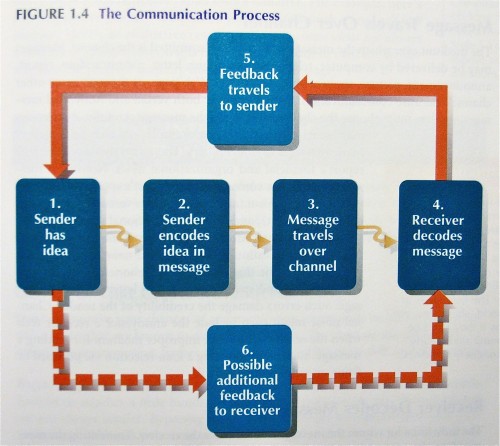Previously posting on writing authentically, I wanted to find some other criticisms/observations on the topic. The following is from Can’t You Get Along with Anyone by Allan C. Weisbecker, one of my favorite how-to books on writing that is not explicitly a how-to book on writing [Part 1, Ch. 12: p. 64]:
Nonfiction writers, of which I am one at this moment, routinely lie like slugs in their narratives. Often they’ll lie like like slugs about facts, which, as you already know, I sometimes do. Sometimes lying about facts is okay, sometimes not. But what’s never okay is to lie in subtext, purposely cause the reader to have a rush of insight about the workings of the world which the writer knows to be false. Lying in subtext is sin. Writers who do this, of which there are a bunch, will rot in Writer Hell. My theory is that this worse case lying-in-writing scenario is invariably caused by the same condition that cases bad behavior of any sort: a failure in self-reflection.*
If you’re going to write a book (but not someday): The key to writing, good writing, is self-reflection. In a sense, it’s a writer’s job, his only job. Take that to the bank and put it in an interest-bearing account.†
* My view is that lying about facts is sometimes “okay” when the writer’s sole motive is to keep the story moving, or to foster unity (symmetry), or to ease the narrative onto another subject (a segue), with not deceitful implications about ho the world works.
† Aside from self-reflecting in his work, a writer has to keep the reader wanting to know What Happens Next. So, regarding jobs, writers actually have two.
Later on in the book, Weisbecker shows some explicit examples, as well as makes (to me) a damning statement for media literacy [Part 5, Ch. 7: p. 336]:
Woodward sees fit to end Veil, the Secret Wars of the CIA with a lie on every level you can lie in a nonfiction book. He ends with a chapter describing a personal visit with CIA director William Casey on his deathbed (from the brain tumor).
About two sentences into this, I knew Woodward had made up the scene …. (Others have opined the same regarding that scene, based on looking into dates and hospital records and the like.)
But I could have forgiven that lie, which was only about facts, i.e., Woodward’s deathbed visit to Casey having never happened. … What Woodward does, however in the deathbed scene he made up, is to lie in the subtext as well —in what is really going on —which kind of lying is a sin, for the commission of which writers will rot in Writer Hell.
Here’s the scene: Casey, on his deathbed, admits to having known about the diversion of Iran arms sales funds to the contras. The subtext here is that Casey didn’t have anything to do with the diversion. He knew about it.
Technically, Woodward wasn’t outright lying. But what he left out of his fucking narrative is that Casey knew about the diversion because he had been instrumental in planning and executing it.
A whopper of a lie by omission, no?
…
But my favorite lie by omission, one near and dear to my heart, comes in Woodward’s Plan of Attack - _his definitive history of our conflict with Saddam Hussein. Woodward does better, wordage-wise, in this one, devoting _one whole page _(out of 450) to U.S. history with “The Beast of Baghdad.” One little problem though: In his one page history Woodward skips from the 1970s to the 1990s, leaving out the 1980s. _Not a word about the decade of the 1980s. Right: The decade during which the U.S. and The Beast of Baghdad were close allies and the U.S., under Reagan then Bush I, was actively and knowingly aiding and abetting The Beast of Baghdad in his crimes against humanity.
Thing is, Bob Woodward himself classifies his books, his nonfiction books, as being “somewhere between the news and the history books.”
Let’s take him at his word on that.
See if you concur: People who provide a democratic society (like what the United States is purported to be) with news (meaning journalists) should maybe question what the shitball motherfuckers in power tell them about their antics. Same goes for the writers of history books, which mold the minds of our children.
Bob Woodward does not question anything the shitball motherfuckers tell him. Woodward just parrots their lies and perception management as facts. Bob Woodward’s books, his nonfiction books, which are something “between the news and the history books,” are lies.
That I had this rush of insight about the journalist who in the 1970s questioned everything and in doing so uncovered the truth, then followed the truth wherever it led, even to the toppling of a president, and who was a hero of mine, and who was now the personification of why Orwell was an optimist and hence of why the world is so fucked-up, slightly exacerbated my terminal loneliness.*
* If the rewriting (or erasing) of history, which is what Woodward does in his books, sounds vaguely familiar, this was the protagonist Winston Smith’s job at the Ministry of Truth in George Orwell’s 1984. Smith, along with the rest of the world of that story, was intimidated, threatened, bullied, into denial/lying via “jackboots on human faces.” That the jackboots are unnecessary in the world of today to get Woodward (and the rest of the mainstream media) to rewrite history is the basis of my observation that Orwell was an optimist.
